한국응용과학기술학회 논문 검색
.jpg)
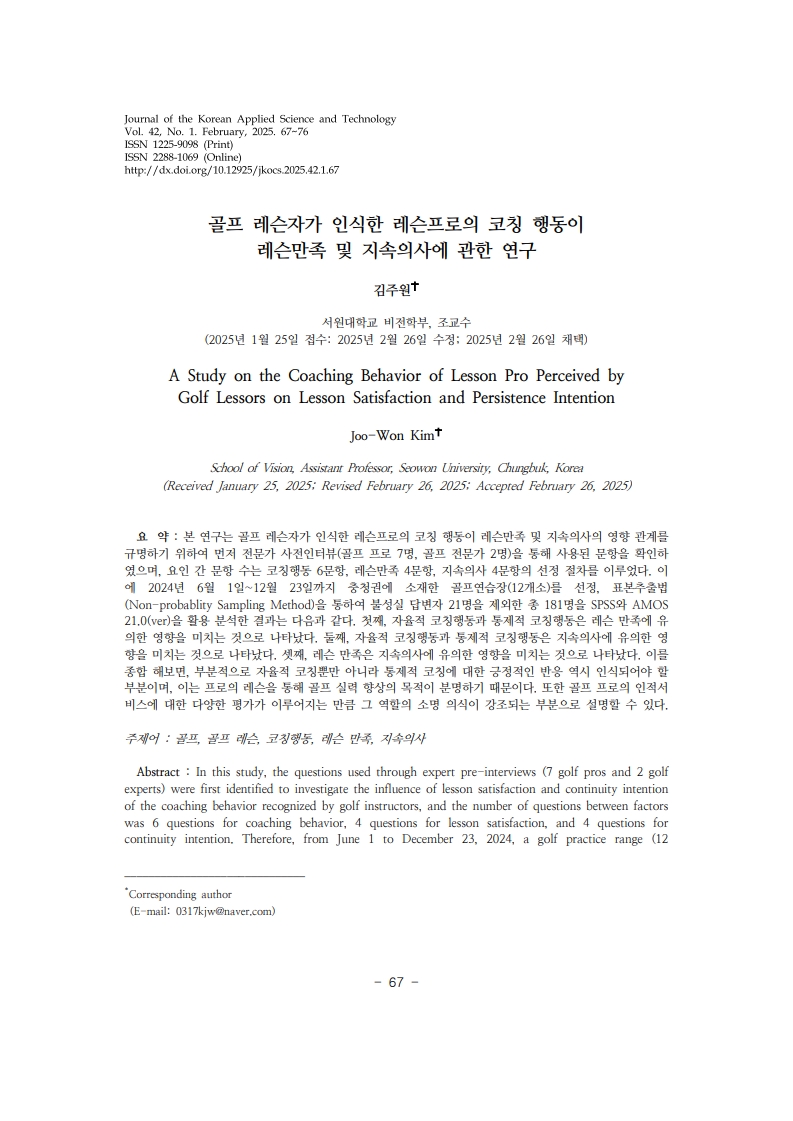

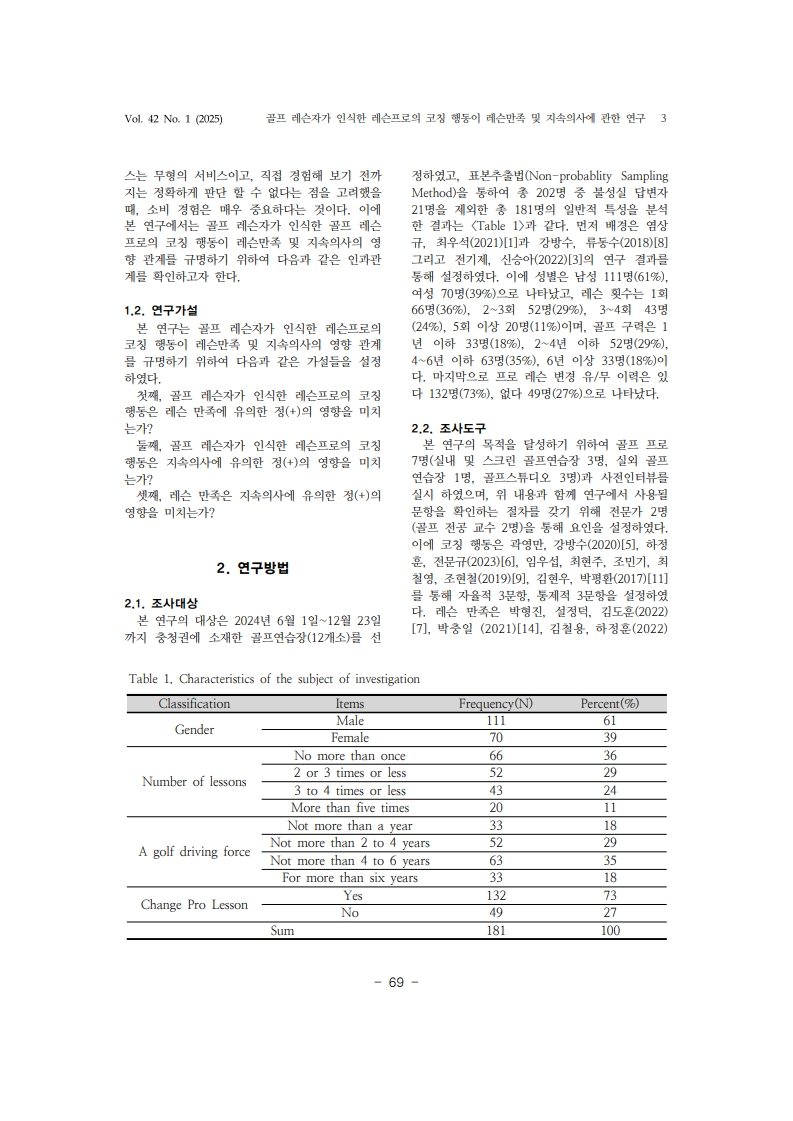
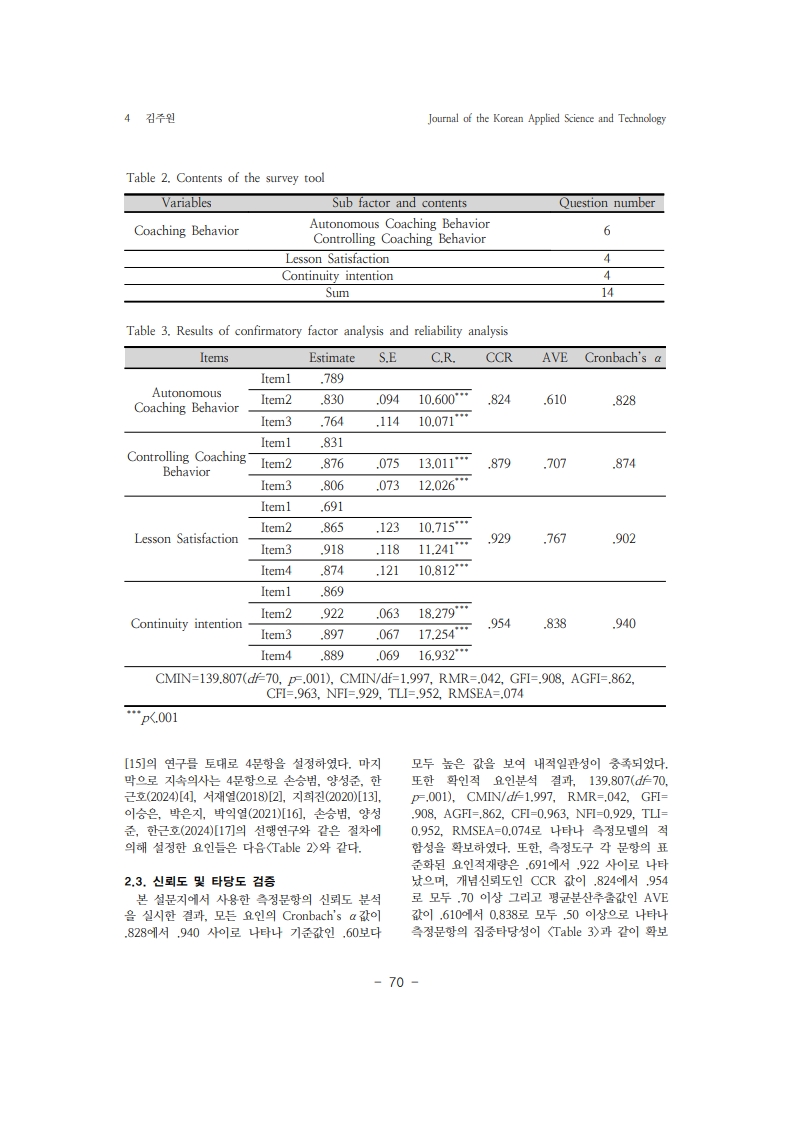

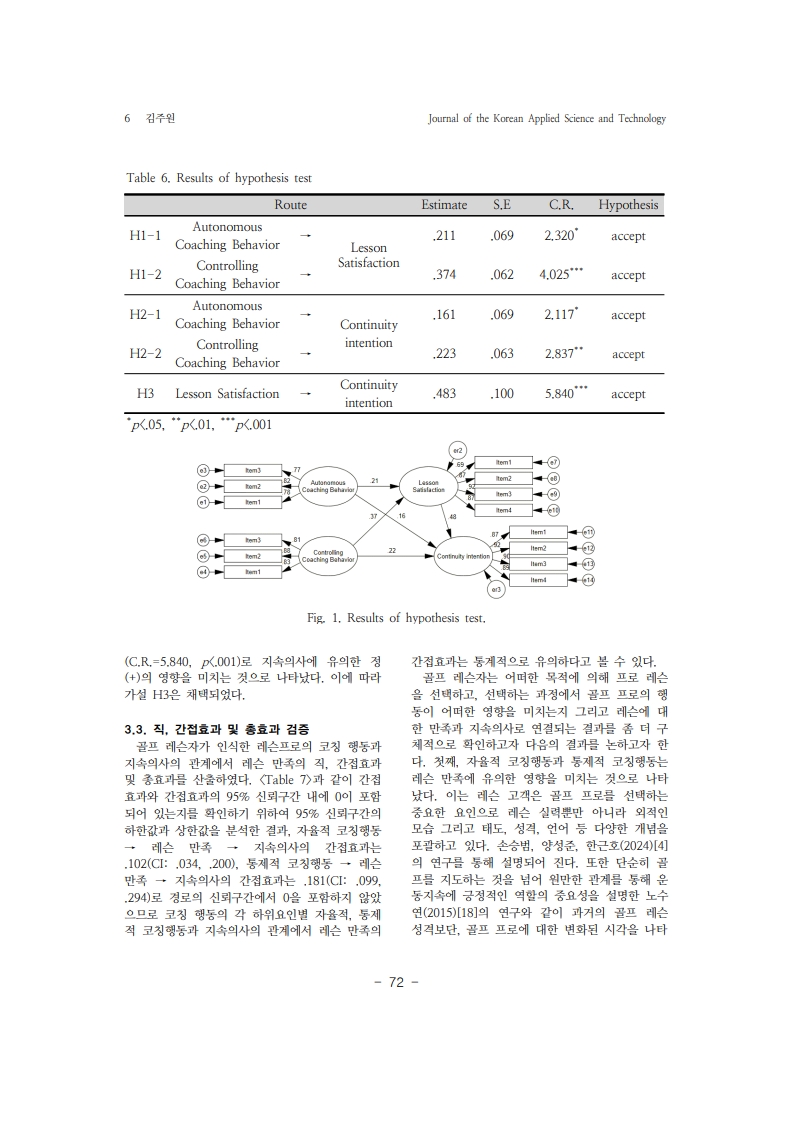
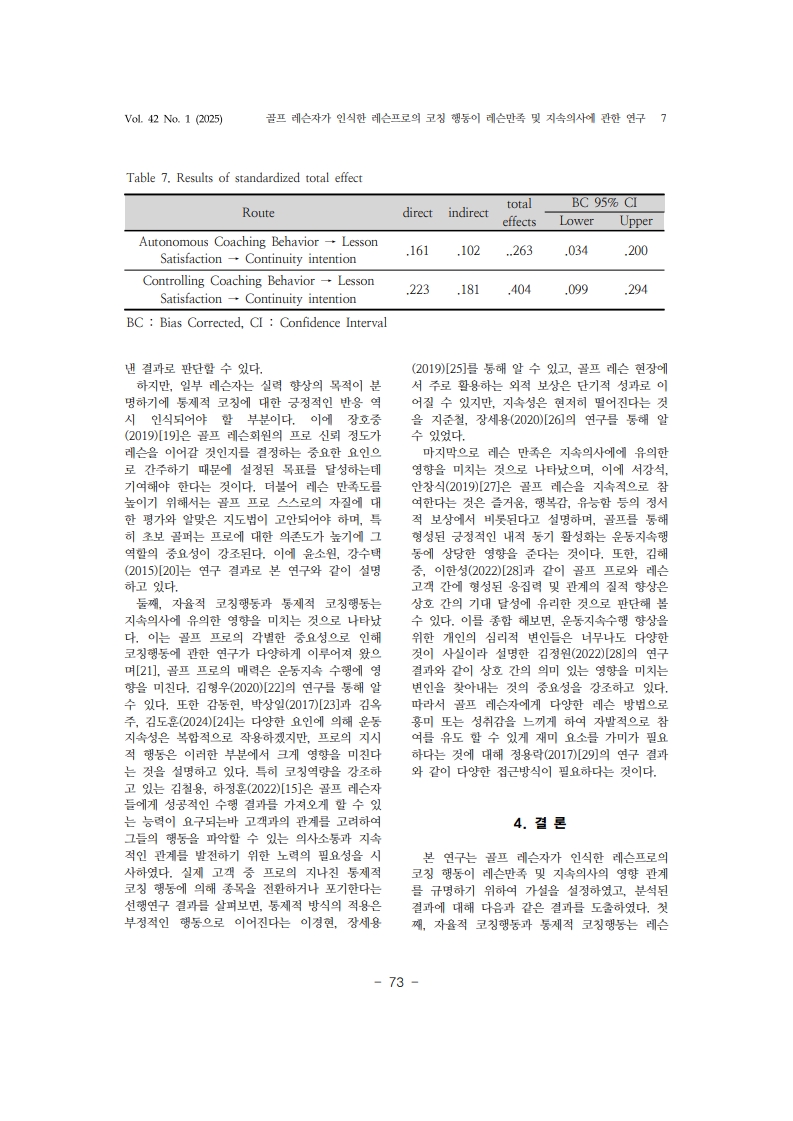
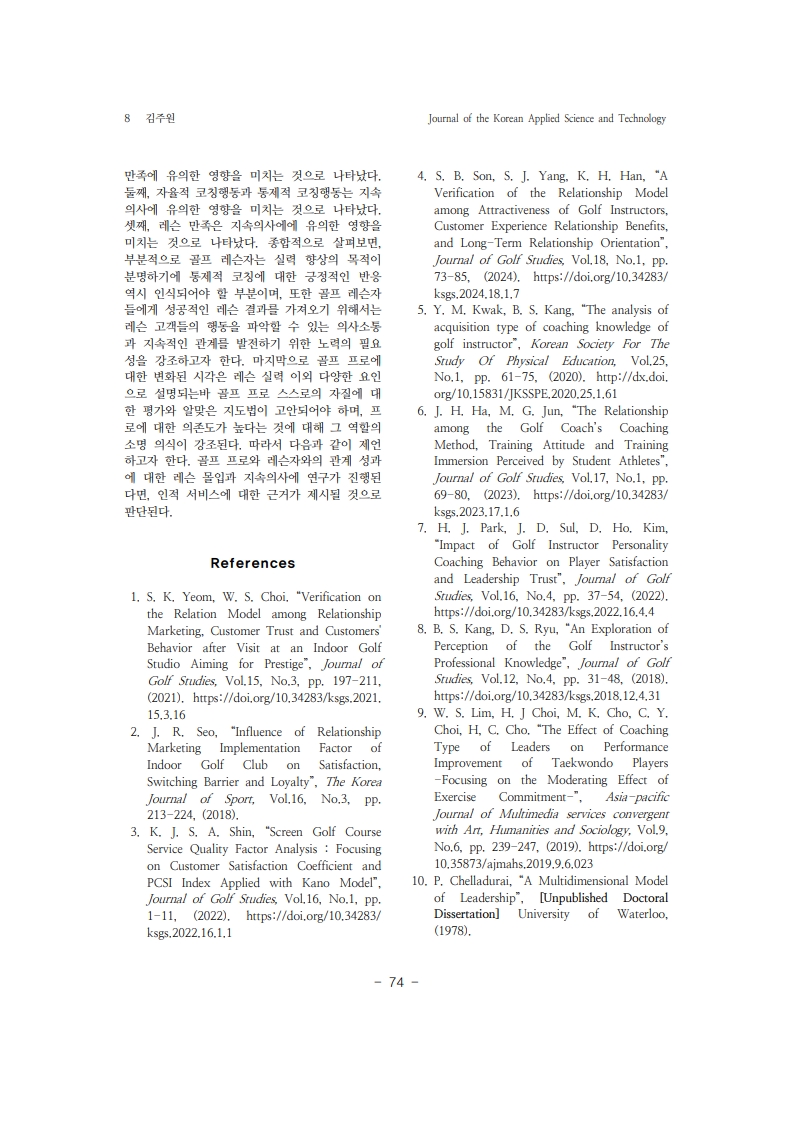
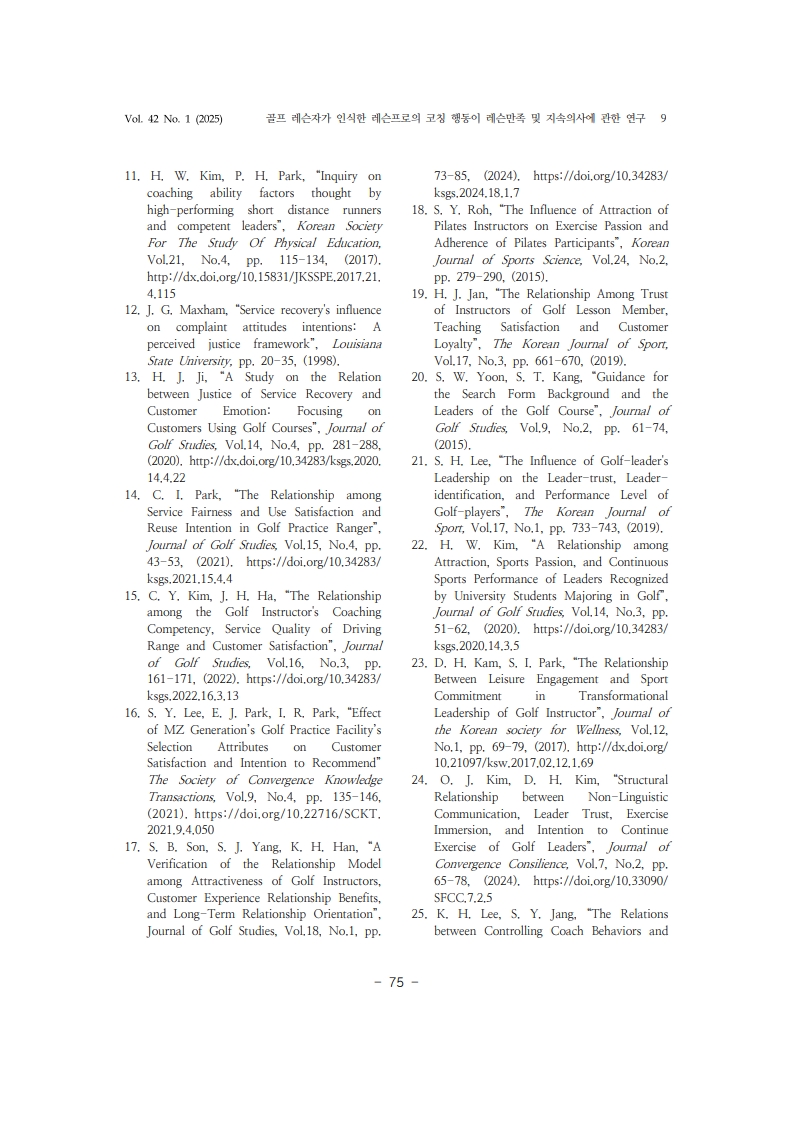
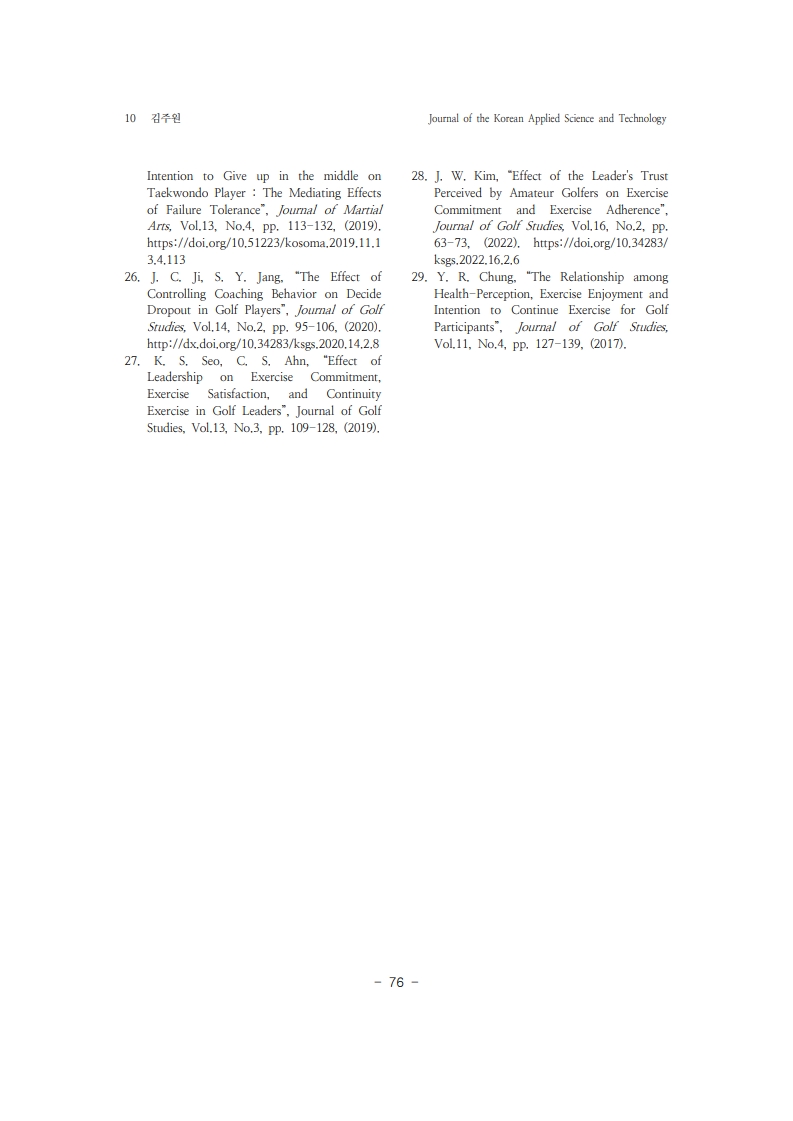
1. S. K. Yeom, W. S. Choi. “Verification on the Relation Model among RelationshipMarketing, Customer Trust and Customers' Behavior after Visit at an Indoor Golf
Studio Aiming for Prestige”, Journal of Golf Studies, Vol.15, No.3, pp. 197-211,(2021). https://doi.org/10.34283/ksgs.2021.15.3.16
2. J. R. Seo, “Influence of Relationship Marketing Implementation Factor ofIndoor Golf Club on Satisfaction, Switching Barrier and Loyalty”, The Korea
Journal of Sport, Vol.16, No.3, pp. 213-224, (2018).
3. K. J. S. A. Shin, “Screen Golf Course Service Quality Factor Analysis : Focusing on Customer Satisfaction Coefficient and PCSI Index Applied with Kano Model”,
Journal of Golf Studies, Vol.16, No.1, pp. 1-11, (2022).https://doi.org/10.34283/ksgs.2022.16.1.1
4. S. B. Son, S. J. Yang, K. H. Han, “A Verification of the Relationship Modelamong Attractiveness of Golf Instructors, Customer Experience Relationship Benefits, and Long-Term Relationship Orientation”, Journal of Golf Studies, Vol.18, No.1, pp. 73-85, (2024). https://doi.org/10.34283/ksgs.2024.18.1.7
5. Y. M. Kwak, B. S. Kang, “The analysis of acquisition type of coaching knowledge of golf instructor”, Korean Society For The Study Of Physical Education, Vol.25,
No.1, pp. 61-75, (2020). http://dx.doi.org/10.15831/JKSSPE.2020.25.1.61
6. J. H. Ha, M. G. Jun, “The Relationship among the Golf Coach’s CoachingMethod, Training Attitude and Training Immersion Perceived by Student Athletes”,
Journal of Golf Studies, Vol.17, No.1, pp. 69-80, (2023).https://doi.org/10.34283/ksgs.2023.17.1.6
7. H. J. Park, J. D. Sul, D. Ho. Kim, “Impact of Golf Instructor PersonalityCoaching Behavior on Player Satisfaction and Leadership Trust”, Journal of Golf
Studies, Vol.16, No.4, pp. 37-54, (2022). https://doi.org/10.34283/ksgs.2022.16.4.4
8. B. S. Kang, D. S. Ryu, “An Exploration of Perception of the Golf Instructor’sProfessional Knowledge”, Journal of Golf Studies, Vol.12, No.4, pp. 31-48, (2018).
https://doi.org/10.34283/ksgs.2018.12.4.31
9. W. S. Lim, H. J Choi, M. K. Cho, C. Y. Choi, H, C. Cho. “The Effect of CoachingType of Leaders on Performance Improvement of Taekwondo Players
-Focusing on the Moderating Effect of Exercise Commitment-”, Asia-pacific Journal of Multimedia services convergent with Art, Humanities and Sociology, Vol.9, No.6, pp. 239-247, (2019). https://doi.org/10.35873/ajmahs.2019.9.6.023
10. P. Chelladurai, “A Multidimensional Model of Leadership”, [Unpublished Doctoral Dissertation] University of Waterloo, (1978).
11. H. W. Kim, P. H. Park, “Inquiry on coaching ability factors thought by high-performing short distance runners and competent leaders”, Korean Society
For The Study Of Physical Education,Vol.21, No.4, pp. 115-134, (2017).http://dx.doi.org/10.15831/JKSSPE.2017.21.4.115
12. J. G. Maxham, “Service recovery's influence on complaint attitudes intentions: A perceived justice framework”, LouisianaState University, pp. 20-35, (1998).
13. H. J. Ji, “A Study on the Relation between Justice of Service Recovery andCustomer Emotion: Focusing on Customers Using Golf Courses”, Journal of
Golf Studies, Vol.14, No.4, pp. 281-288, (2020).http://dx.doi.org/10.34283/ksgs.2020.14.4.22
14. C. I. Park, “The Relationship among Service Fairness and Use Satisfaction and Reuse Intention in Golf Practice Ranger”, Journal of Golf Studies, Vol.15, No.4, pp.
43-53, (2021). https://doi.org/10.34283/ksgs.2021.15.4.4
15. C. Y. Kim, J. H. Ha, “The Relationship among the Golf Instructor's Coaching Competency, Service Quality of Driving Range and Customer Satisfaction”, Journal
of Golf Studies, Vol.16, No.3, pp. 161-171, (2022).https://doi.org/10.34283/ksgs.2022.16.3.13
16. S. Y. Lee, E. J. Park, I. R. Park, “Effect of MZ Generation’s Golf Practice Facility’s Selection Attributes on Customer Satisfaction and Intention to Recommend” The Society of Convergence Knowledge Transactions, Vol.9, No.4, pp. 135-146, (2021).https://doi.org/10.22716/SCKT.2021.9.4.050
17. S. B. Son, S. J. Yang, K. H. Han, “A Verification of the Relationship Modelamong Attractiveness of Golf Instructors, Customer Experience Relationship Benefits, and Long-Term Relationship Orientation”, Journal of Golf Studies, Vol.18, No.1, pp. 73-85, (2024). https://doi.org/10.34283/ksgs.2024.18.1.7
18. S. Y. Roh, “The Influence of Attraction of Pilates Instructors on Exercise Passion and Adherence of Pilates Participants”, Korean Journal of Sports Science, Vol.24, No.2, pp. 279-290, (2015).
19. H. J. Jan, “The Relationship Among Trust of Instructors of Golf Lesson Member,Teaching Satisfaction and Customer Loyalty”, The Korean Journal of Sport,
Vol.17, No.3, pp. 661-670, (2019).20. S. W. Yoon, S. T. Kang, “Guidance forthe Search Form Background and the Leaders of the Golf Course”, Journal of
Golf Studies, Vol.9, No.2, pp. 61-74, (2015).
21. S. H. Lee, “The Influence of Golf-leader's Leadership on the Leader-trust, Leaderidentification,and Performance Level of Golf-players”, The Korean Journal ofSport, Vol.17, No.1, pp. 733-743, (2019).
22. H. W. Kim, “A Relationship among Attraction, Sports Passion, and ContinuousSports Performance of Leaders Recognizedby University Students Majoring in Golf”, Journal of Golf Studies, Vol.14, No.3, pp.51-62, (2020). https://doi.org/10.34283/ksgs.2020.14.3.5
23. D. H. Kam, S. I. Park, “The Relationship Between Leisure Engagement and Sport Commitment in Transformational Leadership of Golf Instructor”, Journal of
the Korean society for Wellness, Vol.12, No.1, pp. 69-79, (2017).http://dx.doi.org/10.21097/ksw.2017.02.12.1.69
24. O. J. Kim, D. H. Kim, “Structural Relationship between Non-LinguisticCommunication, Leader Trust, Exercise Immersion, and Intention to Continue
Exercise of Golf Leaders”, Journal of Convergence Consilience, Vol.7, No.2, pp.65-78, (2024). https://doi.org/10.33090/SFCC.7.2.5
25. K. H. Lee, S. Y. Jang, “The Relations between Controlling Coach Behaviors and Intention to Give up in the middle on Taekwondo Player : The Mediating Effects
of Failure Tolerance”, Journal of Martial Arts, Vol.13, No.4, pp. 113-132, (2019).https://doi.org/10.51223/kosoma.2019.11.13.4.113
26. J. C. Ji, S. Y. Jang, “The Effect of Controlling Coaching Behavior on DecideDropout in Golf Players”, Journal of Golf Studies, Vol.14, No.2, pp. 95-106, (2020).
http://dx.doi.org/10.34283/ksgs.2020.14.2.8
27. K. S. Seo, C. S. Ahn, “Effect of Leadership on Exercise Commitment,Exercise Satisfaction, and Continuity Exercise in Golf Leaders”, Journal of Golf
Studies, Vol.13, No.3, pp. 109-128, (2019).
28. J. W. Kim, “Effect of the Leader's Trust Perceived by Amateur Golfers on Exercise Commitment and Exercise Adherence”, Journal of Golf Studies, Vol.16, No.2, pp. 63-73, (2022). https://doi.org/10.34283/ksgs.2022.16.2.6
29. Y. R. Chung, “The Relationship among Health-Perception, Exercise Enjoyment and Intention to Continue Exercise for Golf Participants”, Journal of Golf Studies,
Vol.11, No.4, pp. 127-139, (2017).

